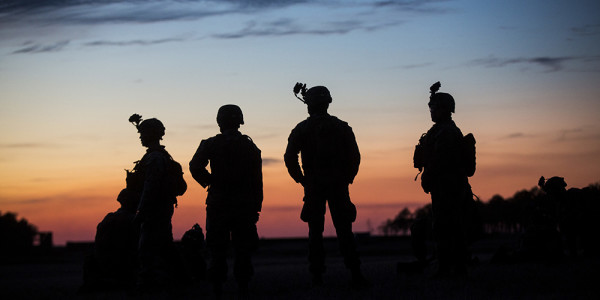

We’re getting close to a year ending in “0,” in an age marked by fights over who is an American and how to slice the voting population for maximum political advantage, so the otherwise boring decennial U.S. Census is again a hot issue. Trump administration officials, anxious to expand their tight immigration policies, have added a retro citizenship question to the 2020 Census form, lied laughably about its origins, and been smacked with threats of lawsuits from a quarter of the states in the union over it — all in the space of a few days.
But amid all the furor and accusations, RAND Corporation senior health policy researcher Carrie Farmer made an interesting observation Tuesday: For the first time in recent U.S. history, a major census will be asking Americans about their citizenship, but not whether they’re military veterans:
Because veteran status is no longer included in the U.S. Census, Farmer added , the Department of Veterans Affairs “lacks an accurate count of the number of veterans it serves”:
Indeed, this was a major point that Farmer and a team of RAND researchers made in a comprehensive 2014 report on the future of VA care, written at the height of outrage over VA’s waitlist scandals. The report’s main thrust: The veteran population is changing rapidly — geographically and age-wise, especially — and VA needs to change with it. Which requires good data.
So what the hell happened? Good question. The decennial U.S. Census had asked Americans about their veterans status since 1840 — but stopped with the 2010 survey. The reason for that Obama-era decision? Streamlining bureaucracy, according to the Census Bureau. Officials drastically shortened the Census form filled out by 99% of all Americans that year, cutting a bunch of comprehensive questions and instead asking them on a different decennial survey, the American Community Survey, which samples only about 2.5% of the U.S. population.
Those ACS responses give valuable data, and the VA is closely involved in designing service-related ACS questions… but it’s not a great sample for drawing fine conclusions about the nation’s veteran population. “While ACS provides information on a sample of Veterans (1,197,923 Veterans in the 2009–2013 sample), this is not a full accounting of the Veteran population,” Farmer and the other RAND researchers wrote in their 2014 report. “An updated census of the Veteran population would enable a definitive count of all Veterans.”
Wow. Thanks, Obama. But let’s also save a big “what the fuck?” for the current administration here. Since his inauguration, President Trump has expressed a zeal for improving U.S. veteran care. Whatever you think that means — more VA resources, more private-sector involvement, more of both — you need good data to frame your policies and evaluate them. You need to ask questions that this White House, like the last one, is not asking.
If the administration’s passion for serving veterans matched its passion for ferreting out noncitizens, you’d think the first group could at least get its own question on the census, too. Then again, maybe no one wants to know how much overlap there is between those groups, either. Whatever the reason, all vets may end up paying a price for the government’s ignorance.
WATCH NEXT:
